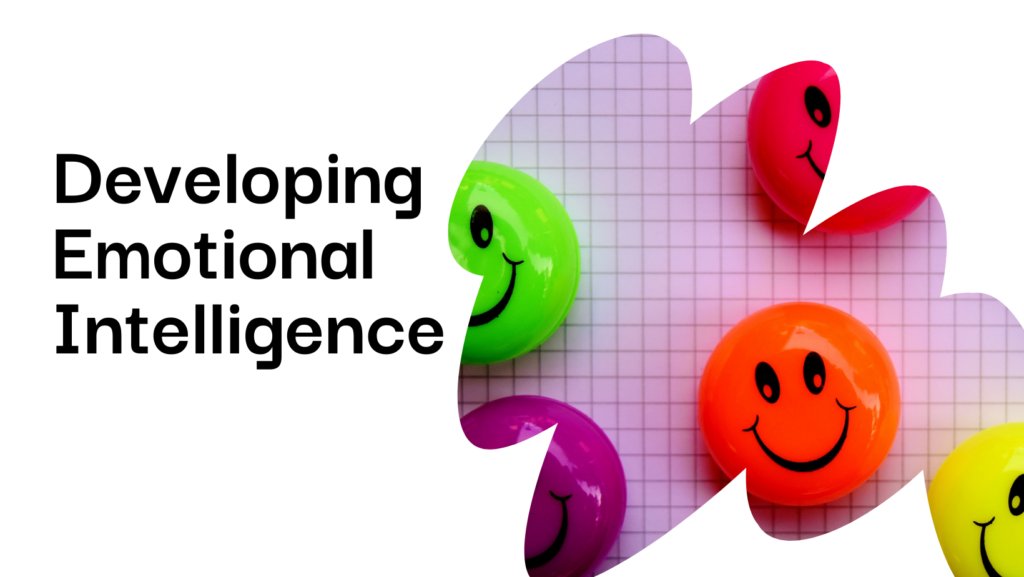Unveiling the Power Within: A Journey into Emotional Intelligence
Emotional intelligence (EI) has become a buzzword in recent years, rightfully so. This multifaceted concept, once relegated to the fringes of psychology, now stands as a crucial factor in navigating the complexities of human interaction and achieving personal fulfilment. Let’s go on a journey into the depths of EI, exploring its essence, models, implications, and pathways to development.
Demystifying EI: A Multifaceted Skillset
EI isn’t a singular entity; it’s a kaleidoscope of cognitive and emotional abilities that empower individuals to understand, utilize, and manage their own emotions effectively. As defined by Salovey and Mayer, Emotional Intelligence Training encompasses the ability to:
Perceive: Recognize and interpret your own emotions and those of others.
Utilize: Leverage emotions as tools for motivation, communication, and decision-making.
Understand: Interpret the emotional undercurrents in situations and relationships.
Manage: Regulate your emotions constructively and navigate challenging situations effectively.
Positivize: Harness emotions for personal growth and fostering positive relationships.
This definition highlights the key facets of EI.

Exploring the Models: Mapping the EI Landscape
Several models have emerged to conceptualize and measure Emotional Intelligence. Here are two prominent ones:
1. The Four-Branch Model:
Developed by Salovey and Mayer, this model identifies four key branches of EI:
Self-awareness: Understanding your own emotions, triggers, and values.
Self-management: Regulating your emotions and responding constructively in challenging situations.
Social awareness: Perceiving the emotions and needs of others.
Relationship management: Building and maintaining healthy, fulfilling relationships.
2. The Goleman Model:
Popularized by Daniel Goleman, this model focuses on five EI components:
Self-awareness: Knowing your strengths, weaknesses, and emotional triggers.
Self-regulation: Controlling your impulses and emotions effectively.
Motivation: Utilizing emotions to drive your goals and aspirations.
Empathy: Understanding and sharing the feelings of others.
Social skills: Building rapport, communicating effectively, and resolving conflict constructively.
These models, provide valuable frameworks for understanding and developing Emotional Intelligence Training. They offer insights into the various components of EI and their interplay in shaping our lives.
The IQ-EQ Enigma: A Complementary Duet
The relationship between IQ and EI is a topic of ongoing exploration. While some studies suggest a weak correlation, others highlight the distinct contributions of both to success and well-being. A crucial takeaway is that EI and IQ are not rivals but rather complementary elements in the symphony of human potential. While IQ provides the cognitive foundation for learning and problem-solving, EI equips individuals with the emotional tools to navigate complexity, build strong relationships, and thrive in diverse environments.

The Seven Shades of EI: Unveiling the Spectrum
Beyond the core models, various facets of EI deserve further exploration. Here are seven key elements to consider:
Emotional Awareness: Recognizing and understanding your own emotions as they arise.
Emotional Regulation: Managing your emotions effectively, preventing them from controlling you.
Empathy: Understanding and sharing the feelings of others, fostering connection and compassion.
Social Awareness: Perceiving the emotional cues in your environment and understanding social dynamics.
Relationship Management: Building and maintaining healthy relationships, fostering trust and collaboration.
Motivation: Using your emotions to drive your goals and aspirations, overcoming challenges with perseverance.
Resilience: Bouncing back from setbacks and challenges, maintaining optimism and emotional well-being.
By focusing on these seven facets, individuals can develop a comprehensive understanding of their own EI and identify areas for growth.
The Path to Mastery: Cultivating EI for a Fulfilling Life
Developing EI is a continuous journey, not a destination. Here are some steps you can take:
Practice self-reflection: Journaling, meditation, and mindfulness can help you connect with your emotions.
Seek feedback: Ask trusted friends and colleagues for honest feedback on your emotional behavior.
Develop healthy coping mechanisms: Learn healthy ways to manage stress and challenging emotions.
Emphasize active listening: Pay attention to others’ emotions
Our journey into the depths of emotional intelligence (EI) has been a fascinating exploration. We’ve demystified its essence, unravelled the intricacies of its models, and glimpsed its profound implications for success and well-being. But this journey isn’t just about intellectual understanding; it’s a call to action, an invitation to cultivate the seeds of EI within ourselves.
As you embark on this journey of EI development, remember this: the world needs your emotional intelligence. Your ability to understand and manage your own emotions, connect with others on a deeper level, and navigate the complexities of life with resilience and grace will contribute to a more compassionate, understanding, and fulfilling world for everyone. So, go forth and cultivate the seeds of EI within you. Let your emotional intelligence bloom, enriching your life and the lives of those around you.
Remember, the power to shape your emotional landscape lies within you. Choose to nurture the seeds of EI, and watch as your life blossoms with fulfilment and connection.





Leave a Reply